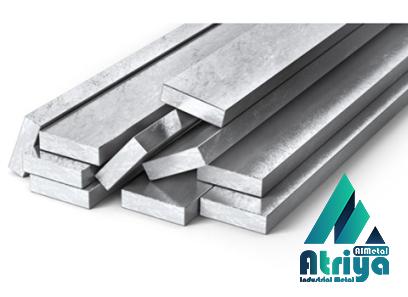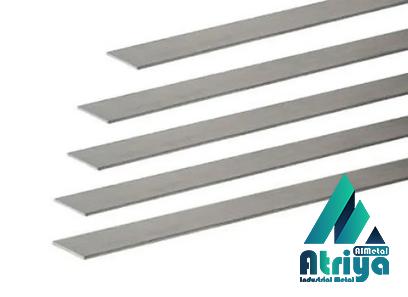Understanding the Differences and Choosing the Right Material for Your Needs When it comes to choosing the right steel for your specific requirements, it’s essential to understand the differences between alloy steel and high carbon steel. While both materials offer their unique advantages, they possess distinct characteristics that can significantly impact their performance and suitability for various applications. Alloy steel, as the name suggests, is a type of steel that encompasses multiple elements in addition to iron and carbon. These additional elements can include manganese, silicon, nickel, chromium, tungsten, and many others, depending on the desired properties. By altering the composition of alloy steel, manufacturers can create a material with enhanced strength, durability, and resistance to wear, heat, and corrosion. On the other hand, high carbon steel is a specific type of alloy steel that contains a higher concentration of carbon than other steel grades. Typically, high carbon steel consists of about 0.6% to 1% carbon content.

.
 This increased carbon content provides high carbon steel with superior hardness, strength, and wear resistance. However, this also makes it less ductile and more prone to brittleness, which can limit its applications in certain industries. One of the primary advantages of alloy steel is its versatility. With the ability to tweak the composition to meet specific requirements, alloy steel can exhibit a wide range of properties. For example, the addition of nickel and chromium can improve corrosion resistance, making alloy steel suitable for applications in industries such as aerospace and marine. Alternatively, adding molybdenum and vanadium can enhance heat resistance, making alloy steel ideal for high-temperature environments like power generation and oil refining. High carbon steel, on the other hand, excels in applications that demand the utmost hardness and wear resistance. Industries such as cutlery, blades, and tools benefit from the exceptional sharpness and durability of high carbon steel.
This increased carbon content provides high carbon steel with superior hardness, strength, and wear resistance. However, this also makes it less ductile and more prone to brittleness, which can limit its applications in certain industries. One of the primary advantages of alloy steel is its versatility. With the ability to tweak the composition to meet specific requirements, alloy steel can exhibit a wide range of properties. For example, the addition of nickel and chromium can improve corrosion resistance, making alloy steel suitable for applications in industries such as aerospace and marine. Alternatively, adding molybdenum and vanadium can enhance heat resistance, making alloy steel ideal for high-temperature environments like power generation and oil refining. High carbon steel, on the other hand, excels in applications that demand the utmost hardness and wear resistance. Industries such as cutlery, blades, and tools benefit from the exceptional sharpness and durability of high carbon steel.
..
 Additionally, high carbon steel can be heat-treated to further enhance its hardness, making it an excellent choice for applications that require extreme strength and resistance to wear, such as springs and bearings. However, it is crucial to consider the trade-off between hardness and brittleness when choosing high carbon steel. Its higher carbon content reduces its ductility compared to other steel grades, making it more susceptible to cracking or breaking under high impact or sudden loading conditions. Therefore, it may not be the ideal choice for applications that require high toughness or the ability to withstand severe dynamic loads. Ultimately, the choice between alloy steel and high carbon steel hinges on your specific needs and the nature of the application.
Additionally, high carbon steel can be heat-treated to further enhance its hardness, making it an excellent choice for applications that require extreme strength and resistance to wear, such as springs and bearings. However, it is crucial to consider the trade-off between hardness and brittleness when choosing high carbon steel. Its higher carbon content reduces its ductility compared to other steel grades, making it more susceptible to cracking or breaking under high impact or sudden loading conditions. Therefore, it may not be the ideal choice for applications that require high toughness or the ability to withstand severe dynamic loads. Ultimately, the choice between alloy steel and high carbon steel hinges on your specific needs and the nature of the application.
…
 For general industrial applications that demand a combination of strength, toughness, and corrosion resistance, alloy steel can offer a versatile solution. On the other hand, if you require exceptional hardness, sharpness, and wear resistance, high carbon steel may be the ideal material for your needs. In conclusion, understanding the differences between alloy steel and high carbon steel is crucial for selecting the right material for your specific requirements. Alloy steel provides versatility and can be tailored to exhibit various desired properties, while high carbon steel excels in applications that demand high hardness and wear resistance. By evaluating your needs and considering the strengths and limitations of each material, you can make an informed decision and ensure optimal performance in your chosen application.
For general industrial applications that demand a combination of strength, toughness, and corrosion resistance, alloy steel can offer a versatile solution. On the other hand, if you require exceptional hardness, sharpness, and wear resistance, high carbon steel may be the ideal material for your needs. In conclusion, understanding the differences between alloy steel and high carbon steel is crucial for selecting the right material for your specific requirements. Alloy steel provides versatility and can be tailored to exhibit various desired properties, while high carbon steel excels in applications that demand high hardness and wear resistance. By evaluating your needs and considering the strengths and limitations of each material, you can make an informed decision and ensure optimal performance in your chosen application.











Your comment submitted.